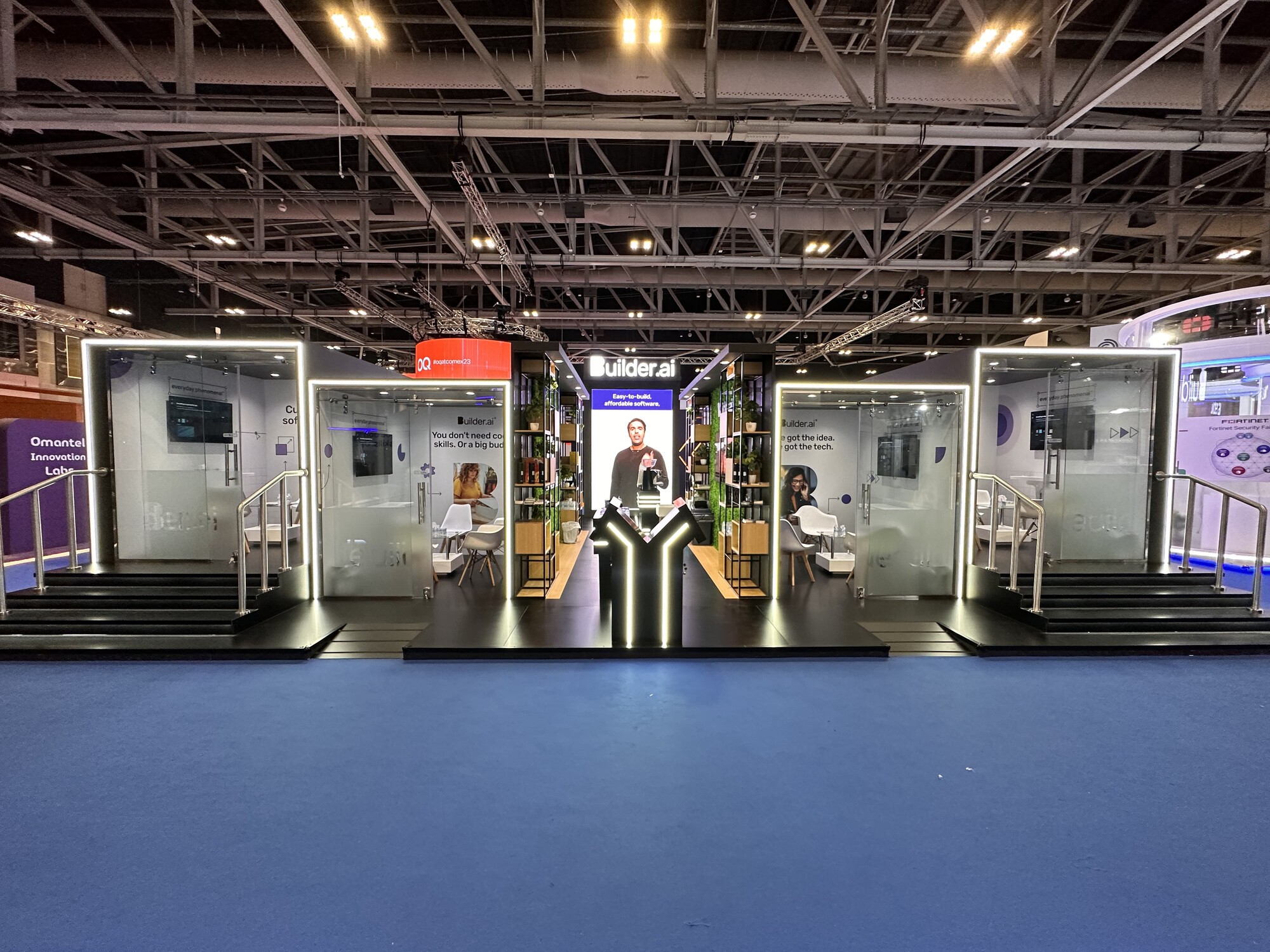How AI and VR have revolutionized exhibition booth design
- Home
- How AI and VR have revolutionized exhibition booth design

- by admin
- (0) Comments
How AI and VR have revolutionized exhibition booth design
In the fast-evolving landscape of exhibitions and trade shows, two cutting-edge technologies—Artificial Intelligence (AI) and Virtual Reality (VR)—have significantly transformed the way exhibition booth designs are conceptualized, experienced, and executed. These innovations have not only enhanced the visual appeal of booths but have also revolutionized attendee engagement and overall event effectiveness.
AI in Exhibition Booth Design
Artificial Intelligence has brought a multitude of advancements to the realm of exhibition booth design:
Personalized Design Solutions: AI algorithms can analyze data from past exhibitions, attendee demographics, and market trends to tailor booth designs specifically to the target audience. This ensures that the booth layout, visuals, and interactive elements resonate effectively with visitors.
Real-time Customization: AI-powered design tools enable real-time adjustments based on attendee feedback or behavioral analytics gathered during the event. Booths can dynamically change elements such as lighting, content display, or interactive features to optimize visitor engagement.
Predictive Analytics: AI algorithms can predict visitor flow patterns within the exhibition space, helping designers strategically position booths for maximum visibility and foot traffic. This predictive capability enhances booth ROI by increasing the likelihood of meaningful interactions.
Efficiency in Design Iterations: AI streamlines the design process by automating mundane tasks like material selection, layout adjustments, and cost estimation. Designers can focus more on creativity and strategic planning, resulting in more innovative and effective booth designs.
VR's Impact on Exhibition Booths
Virtual Reality has brought immersive experiences to exhibition booth design, revolutionizing how attendees interact with brands:
Virtual Walkthroughs: VR technology allows exhibitors to create virtual walkthroughs of their booth designs before physical construction. This enables stakeholders to visualize spatial layouts, test traffic flows, and make informed decisions about design elements and placements.
Interactive Product Displays: VR can simulate product demonstrations and showcase complex features or functionalities in a virtual environment. Attendees can interact with products in a highly immersive and memorable way, enhancing their understanding and engagement.
Remote Participation: VR extends the reach of exhibitions by enabling remote attendees to experience booths virtually. This is particularly beneficial for global events or attendees unable to travel, providing a seamless and inclusive experience.
Data-driven Insights: VR platforms can track attendee behavior within virtual booths, providing valuable insights into engagement levels, popular areas, and interaction patterns. This data informs post-event strategies and helps optimize future booth designs.
Integration of AI and VR
The synergy between AI and VR further amplifies their impact on exhibition booth design:
AI-driven VR Experiences: AI algorithms can personalize VR experiences based on attendee profiles or preferences, ensuring each interaction feels relevant and engaging.
Real-time VR Analytics: AI-powered analytics can process data from VR interactions in real-time, offering immediate feedback to exhibitors and enabling on-the-fly adjustments to maximize engagement.
Predictive Modeling: AI can analyze VR interaction data to predict attendee behavior and preferences, informing future design iterations and enhancing overall booth effectiveness.
Conclusion
In conclusion, the integration of Artificial Intelligence and Virtual Reality has transformed exhibition booth design into a highly dynamic and personalized experience. These technologies empower designers to create immersive, interactive, and data-driven booths that not only captivate attendees but also deliver measurable ROI for exhibitors. As AI and VR continue to evolve, their role in shaping the future of exhibitions promises even more innovative and impactful design possibilities. Embracing these technologies ensures that exhibitors stay at the forefront of engagement and effectiveness in the competitive landscape of trade shows and exhibitions.
AI algorithms can analyze attendee behavior patterns from past events, social media interactions, and registration data. This information helps in understanding visitor preferences and interests, allowing designers to tailor booth layouts, content, and interactive elements accordingly. Leo Marken

Exhibitors can create virtual replicas of their physical booths using VR. Attendees can explore these virtual environments from anywhere, gaining a comprehensive view of the booth layout, products, and interactive features. This capability is especially valuable for pre-event marketing and remote participation.
VR enables realistic demonstrations of products or services in a controlled virtual environment. Complex machinery, architectural designs, or even software interfaces can be showcased interactively, allowing attendees to experience functionalities that might be challenging to demonstrate physically.

Leave a Comment